Diving into a complex topic like the virtual driver’s position is no easy task. The hardest part is undoubtedly letting go of old methods and embracing a new approach to your simulations.
Yesterday’s truth, dictated by low-quality hardware, is no longer necessarily valid today. Most of our current Direct Drive wheels can handle a vast amount of information coming from a simulation’s physics. Now is the time to revisit our methods to simplify the whole process. Do we still need to tinker with filters that might mask a simulation’s true capabilities? Let’s explore how we can change our approach.
A New Method
It’s undeniable that the settings in the View Settings tab drastically affect Force Feedback. Even though we now have a new avenue with MEMS sensors capturing physics data, it doesn’t necessarily make things easier. Since we don’t yet have software to measure this data precisely, we have to rely on our own sensations. And testimonials, like Florent’s, show that more and more of you are interested in this topic.
The biggest issue in sim racing remains the multitude of variables. However, what sim racers want above all is plug-and-play usability. Does a simulation have to be complicated? Not necessarily, if we adopt the right approach.
What if we aimed not only to simplify the process but also to develop a new way of approaching sim racing?
Simplicity is Key

📌 SUGGESTION: Select the cockpit view without the steering wheel.
For this test, we’ll be using the Ferrari 296 GT3, the latest addition to Ferrari’s racing family. The test will be conducted on a Samsung Odyssey G5 Ultra Wide 34-inch single-screen setup to optimize immersion and fine-tune the settings.
Regarding the wheelbase data, we’ll make some compromises to prioritize fine details. We’ll be using ClubSport DD 12 Nm, a base with enough torque for today’s test:
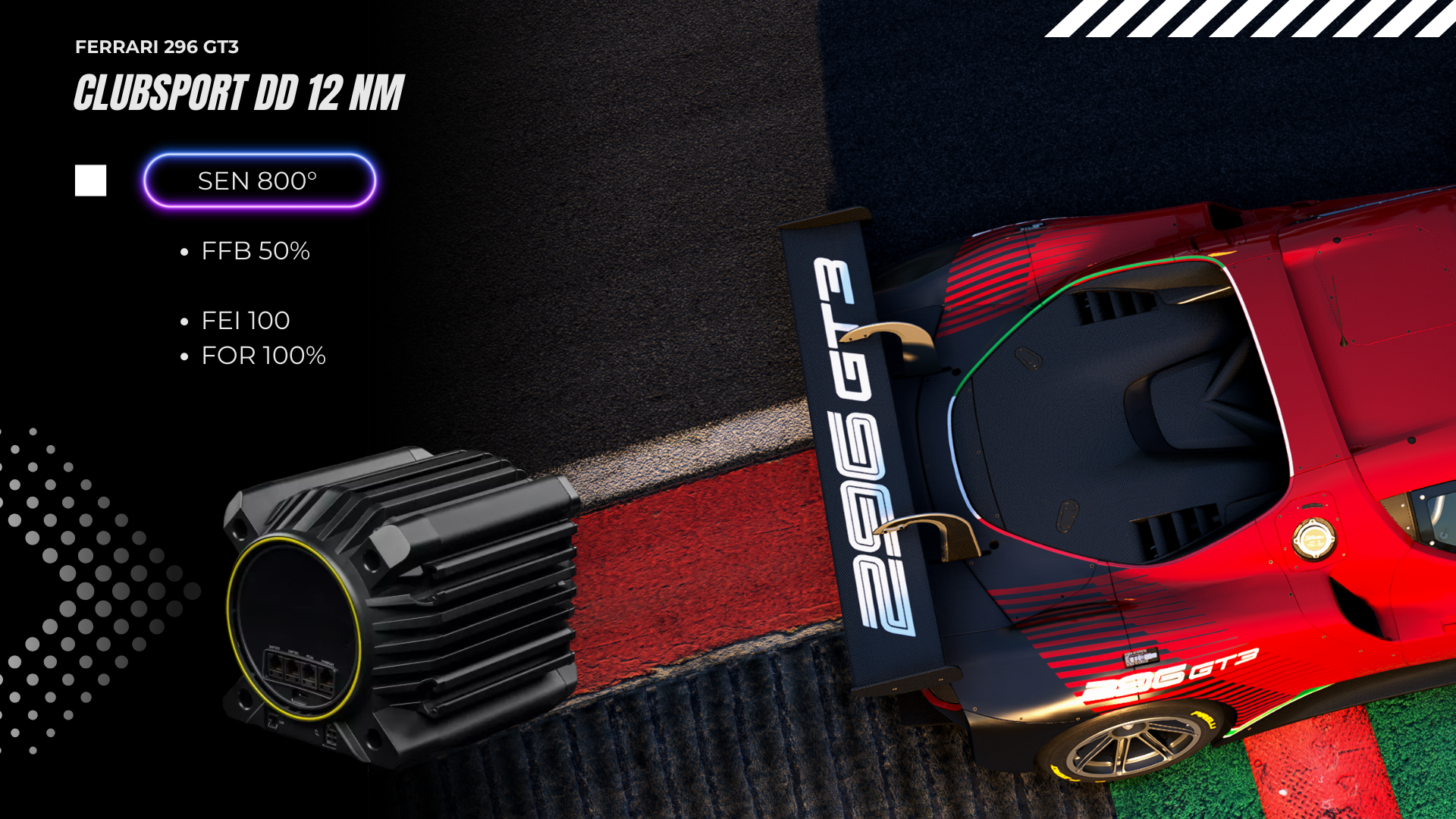
A crucial reminder: Using the correct steering rotation allows us to fully explore the physics within the proper operating range. Additionally, it’s the only way to achieve a realistic steering lock in a simulation.
In Assetto Corsa Competizione, we’ll apply the same principle with a rotation of 800° and GAIN set to 100.

Don’t forget the Force Feedback value on track, which is set to 1.0 by default. This value seems particularly high: the wheel becomes too direct, overloading the vehicle and providing too little information from the tires. For our test, we’ll use 0.50 as a baseline.
📌 SUGGESTION: With a temporary profile, you can assign the following buttons to the DISTANCE function. Simple and effective for adjusting the value while driving.
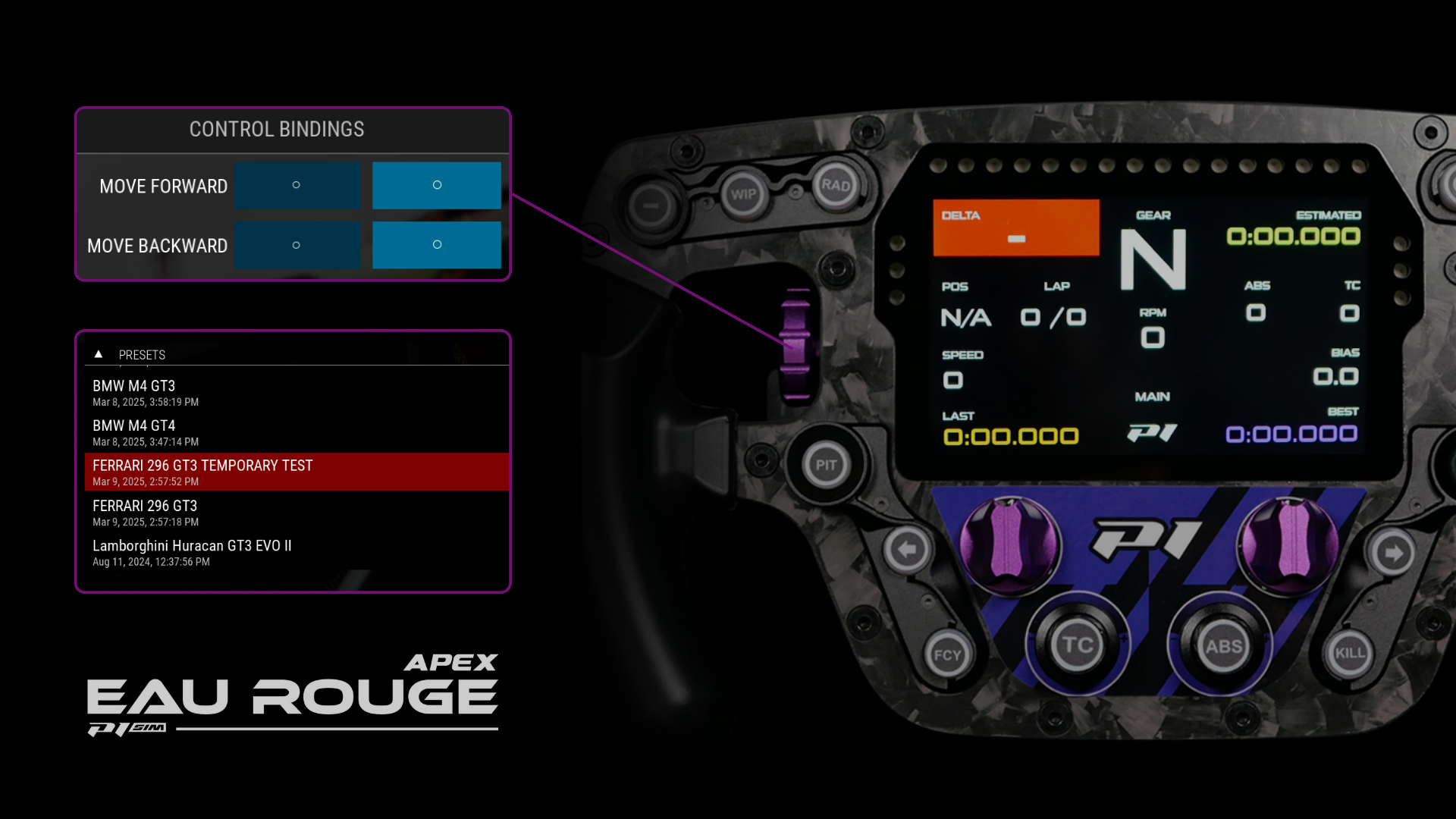
The idea is to balance the overall force feedback using View Settings first, before fine-tuning GAIN and FFB.
Adjusting Cockpit View
We start our tests under challenging weather conditions, on a heavily rain-soaked track, to observe how the car reacts in low-grip situations. The goal is to adjust the DISTANCE setting first before modifying other cockpit view parameters. In the rain, precisely controlling vehicle mass is crucial.

📌 SUGGESTION: Don’t hesitate to modify the track state during your tests (green or optimal) to observe the vehicle’s behavior on the track.
We’ll be working with a FOV of 54°, which roughly corresponds to human vision, adjusted to our screen size.
This default setting, which places us relatively close to the dashboard, serves as a starting point for our tests.
Adjusting DISTANCE
We start by moving the view as far back as possible via the View Settings menu.
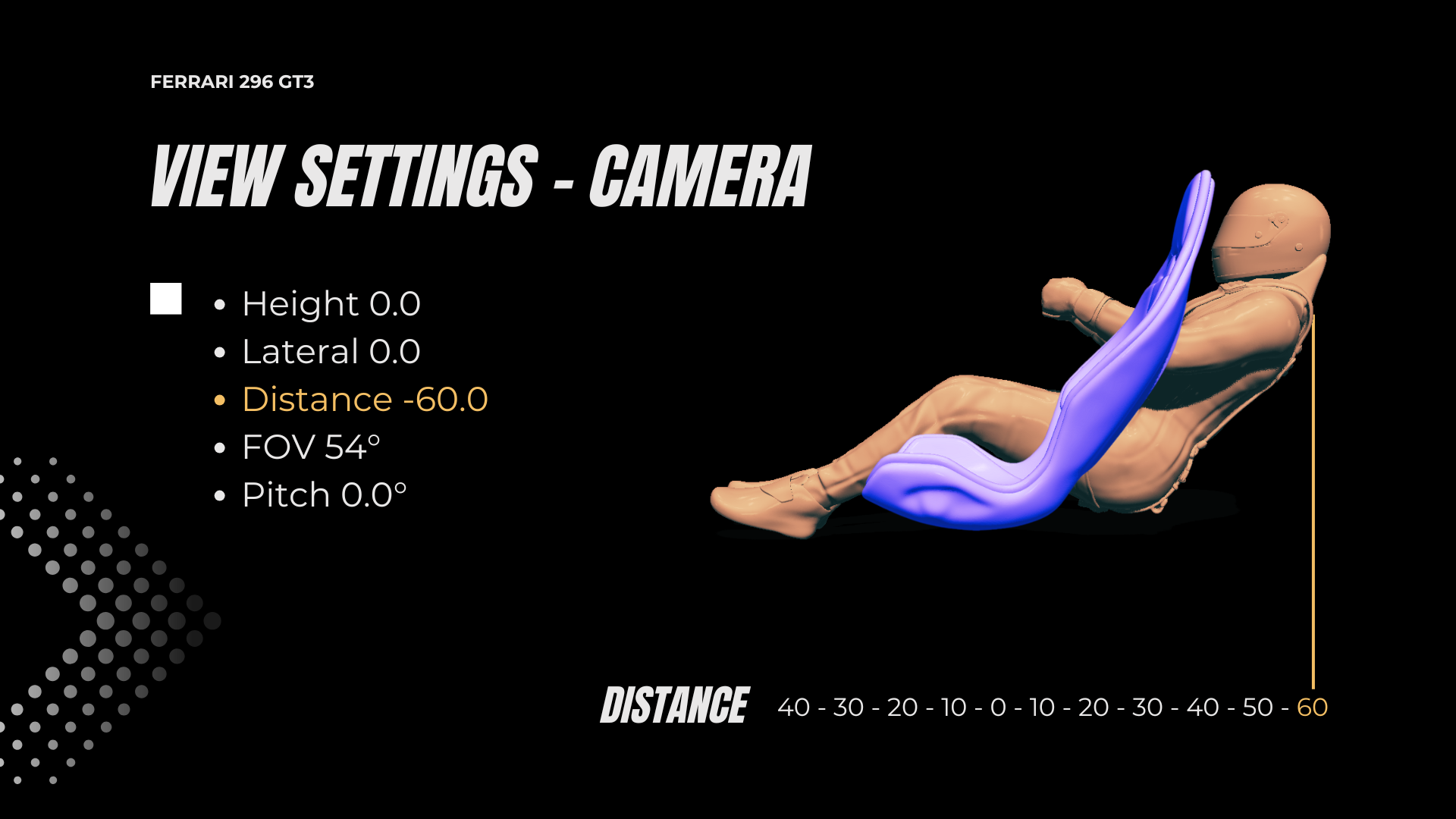
This corresponds to a value of -60.0. While driving, we gradually move the view closer to the dashboard, trying to understand and feel the interaction between the front and rear of the car, refining the force distribution across the chassis.
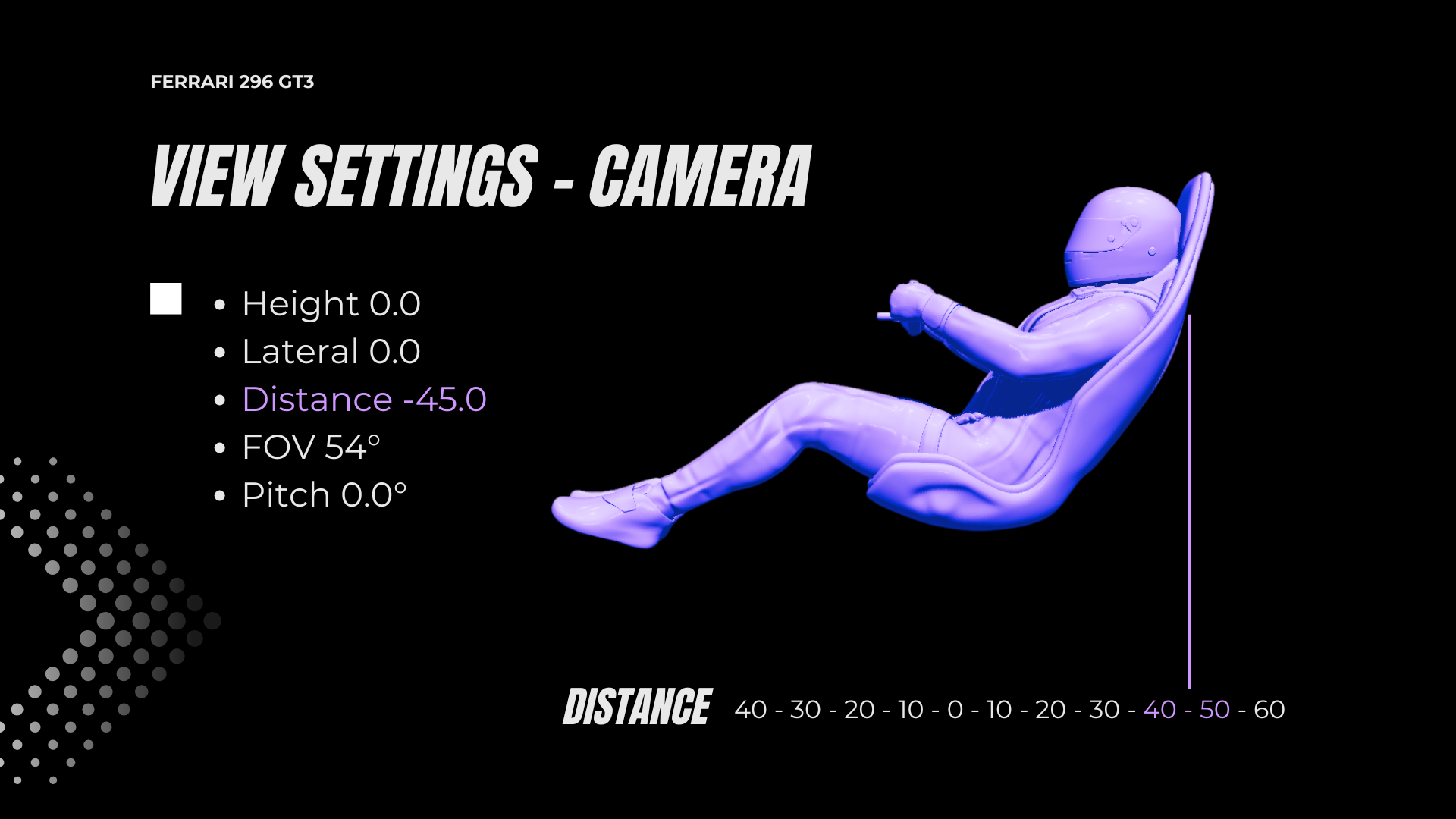
After progressively moving forward, we found a good balance at -45.0.
At this value, the car responds more naturally, and we feel in sync with the chassis dynamics, without an excessive focus on the front axle only. It’s a perfect balance, and we feel that the steering column is perfectly aligned.
And surprisingly, the FFB, which initially felt extremely strong due to the GAIN set at 100, became smoother and more informative. It was as if the gears had aligned perfectly. In the rain—especially in extreme conditions like thunderstorms—you can truly enjoy the driving experience. Precision is key, of course, but the whole setup feels incredibly coherent.
And what happens when we turn off TC1 and TC2 on a dry track? The car becomes playful and engaging.
What About PITCH and HEIGHT?
After several tests, adjusting PITCH (view tilt) and HEIGHT (view height) didn’t yield the expected results. Since we’re already achieving excellent outcomes without these settings, we’ll temporarily ignore them. Other vehicles might benefit from these adjustments, but time will tell whether we were right or wrong.
ABS Does Its Job
Interestingly, in ACC, some cars provide more feedback under braking than others. This is the case with the Porsche 992 GT3-R, for example. I always believed that its weight distribution made the front end lighter, leading to quicker ABS lock-ups. However, after discovering the proper physics balance with the Ferrari 296 GT3, I experienced exactly the same sensations.
This proves that as long as your FFB is finely tuned, you can extract a tremendous amount of additional feedbackthrough your wheel.
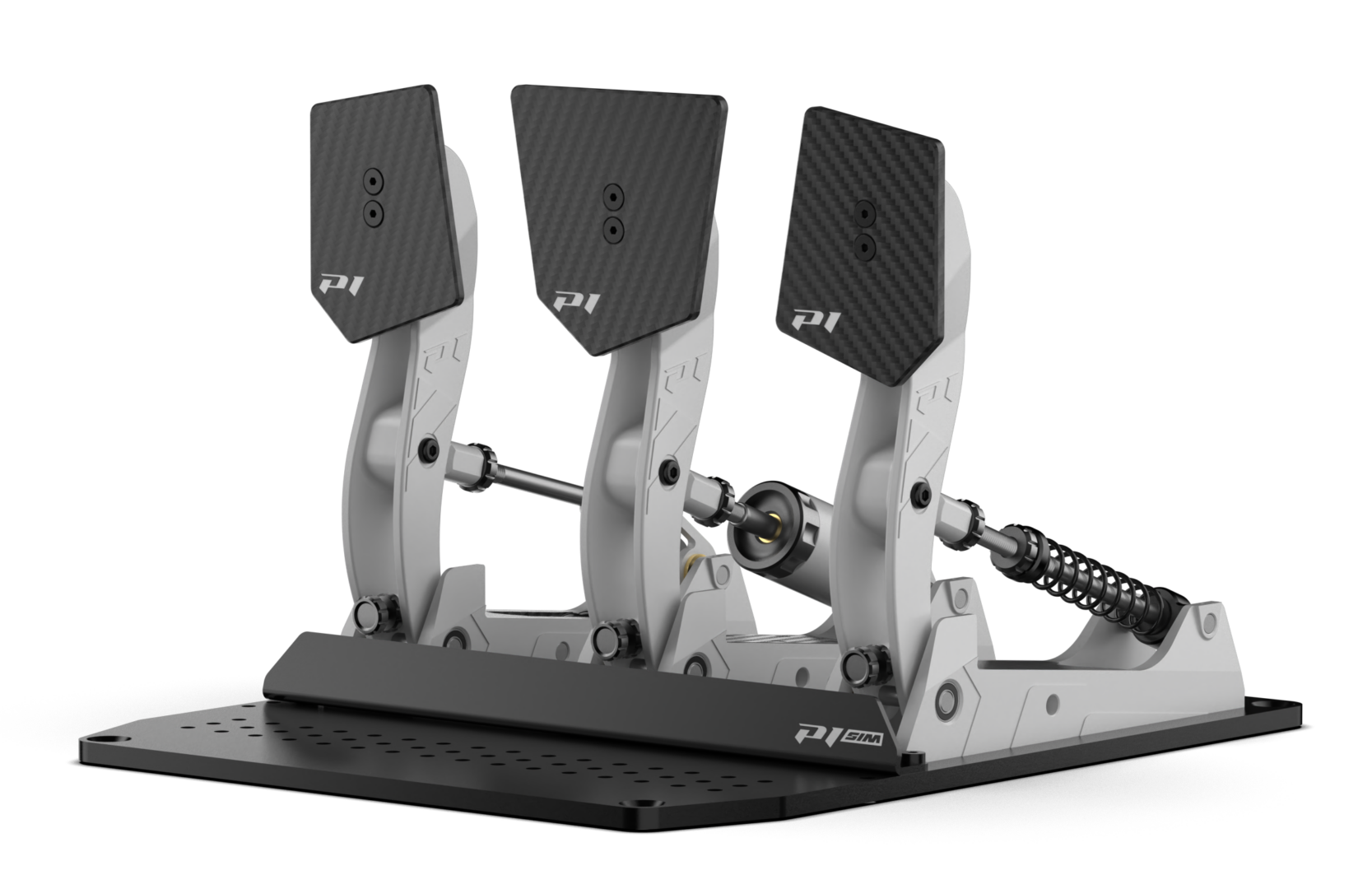
For reference, I’m using the Mistral pedal set by P1 SIM, our technical partner, whose expertise allows me to truly understand the intricacies of race car braking.
I’ll be diving deeper into this subject in an upcoming in-depth test.
Simplicity is the Key to Success
The result was so impressive that I rushed to test other cars in heavy rain. All it takes is using the correct steering rotation and finding the right balance through the DISTANCE setting to fully enjoy the simulation.

Of course, in my specific case—with a ClubSport DD 12 Nm base—this method works perfectly. It’s possible that with other bases, in different conditions, it may not be enough. However, one factor remains constant: the force balance achieved through the DISTANCE setting.
Conclusion
Once again, View Settings – Camera prove that there is a direct link between the virtual driver’s position and the physics of the game. It’s so evident that ignoring this area seems unthinkable.
Mission accomplished? I’d say yes, based on the results. We’ve set the correct steering rotation, found the right balance through DISTANCE. Just two simple adjustments to fully enjoy your favorite simulation.
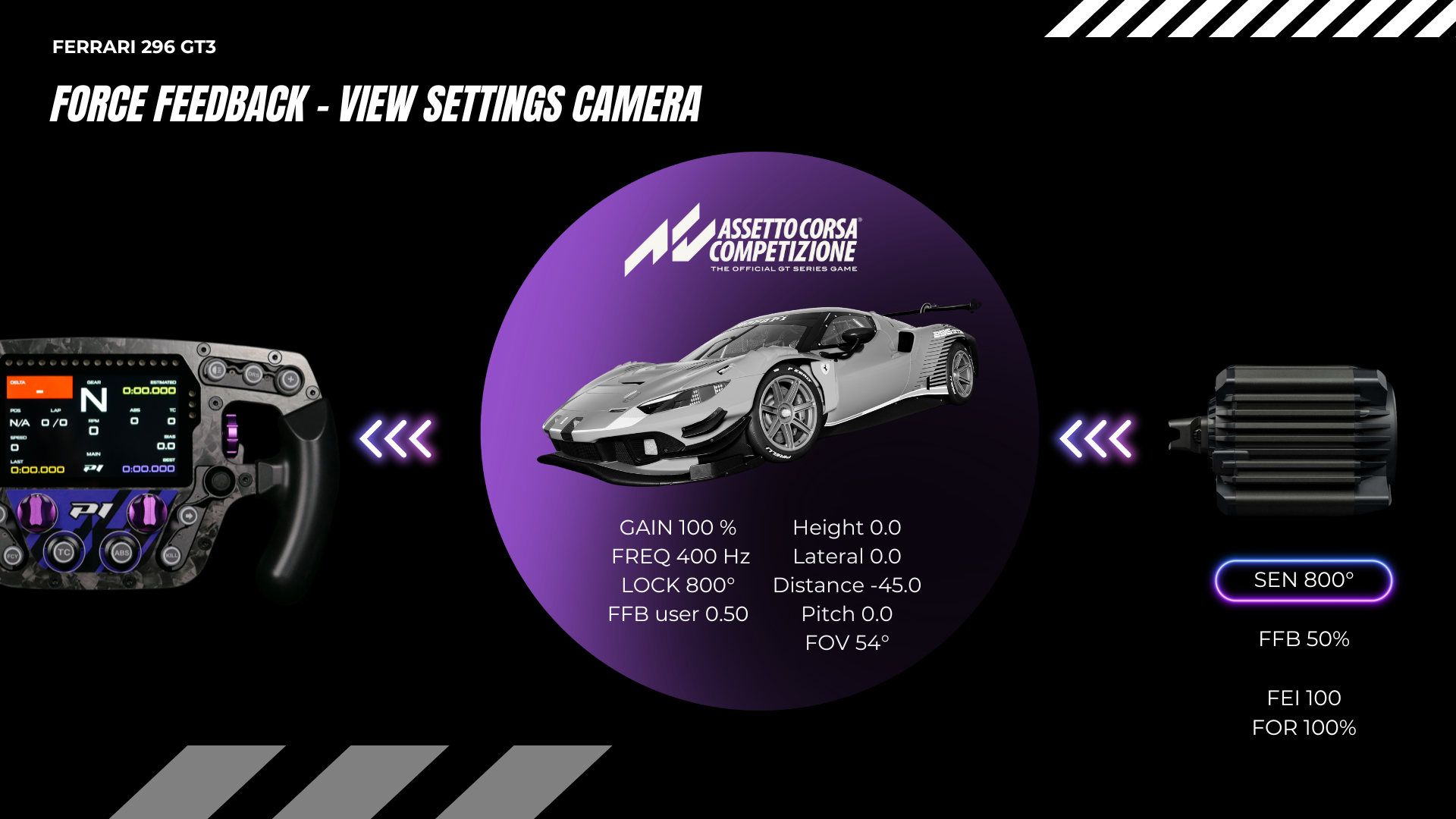
Of course, you can still tweak the cockpit view to your liking, but keep in mind that this will inevitably move you away from the optimal position to feel the physics in full detail.
For me, what matters most is the feeling through the wheel. Perfectly controlling the car is worth a few compromises.

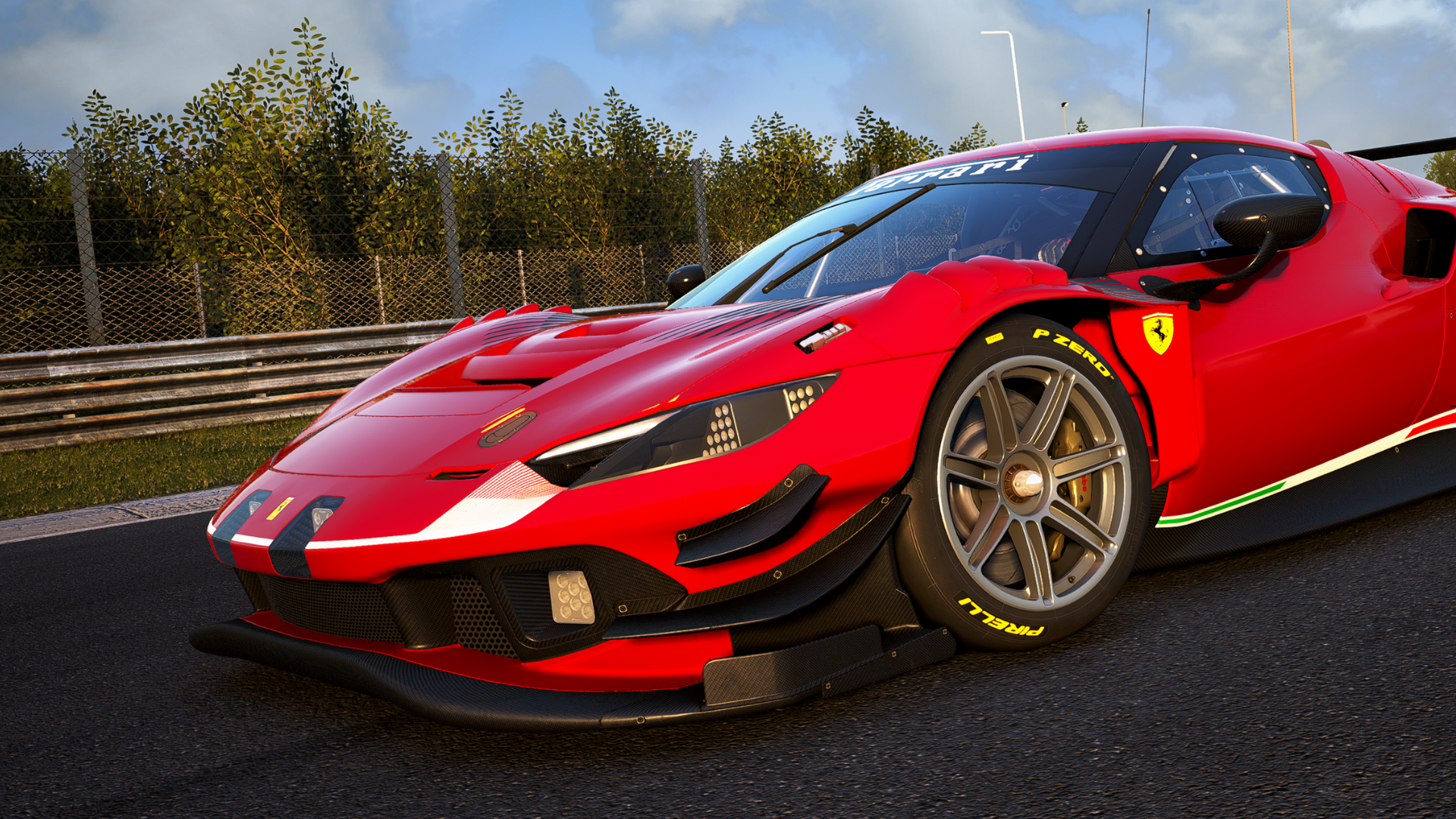
Leave a Comment